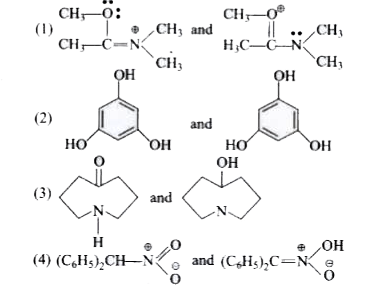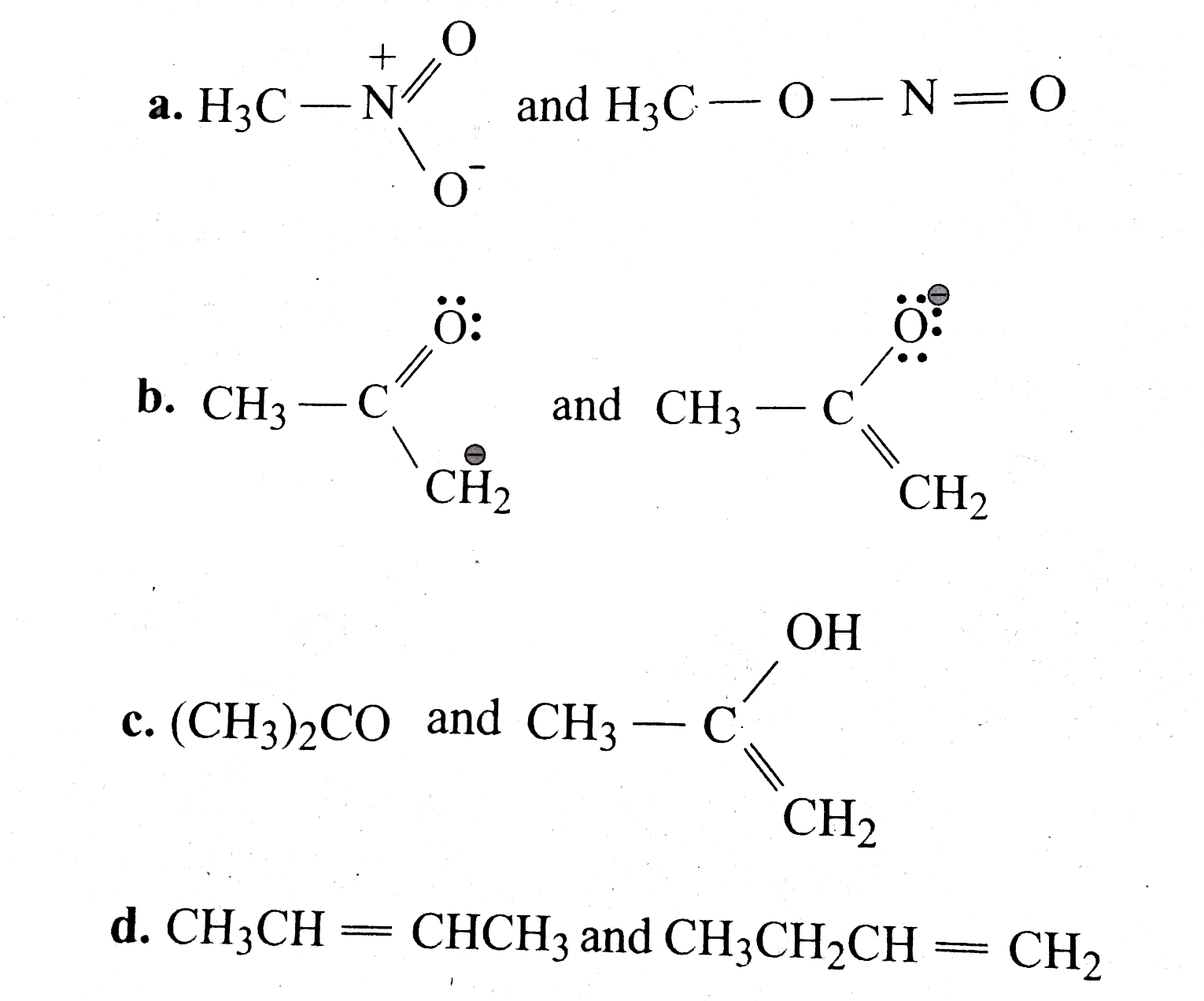Which of the following pair has same structure?
PH3andCl2
SO2andNH3
PCl3andSF6
NH+4ansSO2−4
The correct Answer is:D
To determine which pair has the same structure, we will analyze the hybridization and molecular geometry of each pair given in the options. We will use the formula for calculating the steric number (SN):
SN=12(V+M+Charge (anion)−Charge (cation))
Where:
- V = number of valence electrons of the central atom
- M = number of monovalent atoms attached to the central atom
Step 1: Analyze the first pair (PH3 and Cl2)
1. For PH3 (Phosphine):
- Central atom: Phosphorus (P)
- Valence electrons (V): 5
- Monovalent atoms (M): 3 (3 Hydrogens)
- Calculation:
SN=12(5+3)=82=4
- Bond pairs: 3, Lone pairs: 1 (Shape: Pyramidal)
2. For Cl2 (Chlorine molecule):
- Central atom: Chlorine (Cl)
- Valence electrons (V): 7 (each Cl has 7)
- Monovalent atoms (M): 0
- Calculation:
SN=12(7+7)=142=7
- Bond pairs: 1, Lone pairs: 3 (Shape: Linear)
Conclusion: PH3 is pyramidal, Cl2 is linear. They do not have the same structure.
Step 2: Analyze the second pair (SO2 and NH3)
1. For SO2 (Sulfur Dioxide):
- Central atom: Sulfur (S)
- Valence electrons (V): 6
- Monovalent atoms (M): 0 (Oxygen is divalent)
- Calculation:
SN=12(6+0)=62=3
- Bond pairs: 2, Lone pairs: 1 (Shape: Bent)
2. For NH3 (Ammonia):
- Central atom: Nitrogen (N)
- Valence electrons (V): 5
- Monovalent atoms (M): 3 (3 Hydrogens)
- Calculation:
SN=12(5+3)=82=4
- Bond pairs: 3, Lone pairs: 1 (Shape: Pyramidal)
Conclusion: SO2 is bent, NH3 is pyramidal. They do not have the same structure.
Step 3: Analyze the third pair (PCl3 and SF6)
1. For PCl3 (Phosphorus Trichloride):
- Central atom: Phosphorus (P)
- Valence electrons (V): 5
- Monovalent atoms (M): 3 (3 Chlorines)
- Calculation:
SN=12(5+3)=82=4
- Bond pairs: 3, Lone pairs: 1 (Shape: Pyramidal)
2. For SF6 (Sulfur Hexafluoride):
- Central atom: Sulfur (S)
- Valence electrons (V): 6
- Monovalent atoms (M): 6 (6 Fluorines)
- Calculation:
SN=12(6+6)=122=6
- Bond pairs: 6, Lone pairs: 0 (Shape: Octahedral)
Conclusion: PCl3 is pyramidal, SF6 is octahedral. They do not have the same structure.
Step 4: Analyze the fourth pair (NH4+ and SO4^2-)
1. For NH4+ (Ammonium ion):
- Central atom: Nitrogen (N)
- Valence electrons (V): 5
- Monovalent atoms (M): 4 (4 Hydrogens)
- Charge: +1 (cation)
- Calculation:
SN=12(5+4−1)=82=4
- Bond pairs: 4, Lone pairs: 0 (Shape: Tetrahedral)
2. For SO4^2- (Sulfate ion):
- Central atom: Sulfur (S)
- Valence electrons (V): 6
- Monovalent atoms (M): 0 (Oxygen is divalent)
- Charge: -2 (anion)
- Calculation:
SN=12(6+0+2)=82=4
- Bond pairs: 4, Lone pairs: 0 (Shape: Tetrahedral)
Conclusion: Both NH4+ and SO4^2- are tetrahedral. They have the same structure.
Final Answer:
The pair that has the same structure is NH4+ and SO4^2-.
---
- V = number of valence electrons of the central atom
- M = number of monovalent atoms attached to the central atom
- Central atom: Phosphorus (P)
- Valence electrons (V): 5
- Monovalent atoms (M): 3 (3 Hydrogens)
- Calculation:
SN=12(5+3)=82=4
- Bond pairs: 3, Lone pairs: 1 (Shape: Pyramidal)
- Central atom: Chlorine (Cl)
- Valence electrons (V): 7 (each Cl has 7)
- Monovalent atoms (M): 0
- Calculation:
SN=12(7+7)=142=7
- Bond pairs: 1, Lone pairs: 3 (Shape: Linear)
- Central atom: Sulfur (S)
- Valence electrons (V): 6
- Monovalent atoms (M): 0 (Oxygen is divalent)
- Calculation:
SN=12(6+0)=62=3
- Bond pairs: 2, Lone pairs: 1 (Shape: Bent)
- Central atom: Nitrogen (N)
- Valence electrons (V): 5
- Monovalent atoms (M): 3 (3 Hydrogens)
- Calculation:
SN=12(5+3)=82=4
- Bond pairs: 3, Lone pairs: 1 (Shape: Pyramidal)
- Central atom: Phosphorus (P)
- Valence electrons (V): 5
- Monovalent atoms (M): 3 (3 Chlorines)
- Calculation:
SN=12(5+3)=82=4
- Bond pairs: 3, Lone pairs: 1 (Shape: Pyramidal)
- Central atom: Sulfur (S)
- Valence electrons (V): 6
- Monovalent atoms (M): 6 (6 Fluorines)
- Calculation:
SN=12(6+6)=122=6
- Bond pairs: 6, Lone pairs: 0 (Shape: Octahedral)
- Central atom: Nitrogen (N)
- Valence electrons (V): 5
- Monovalent atoms (M): 4 (4 Hydrogens)
- Charge: +1 (cation)
- Calculation:
SN=12(5+4−1)=82=4
- Bond pairs: 4, Lone pairs: 0 (Shape: Tetrahedral)
- Central atom: Sulfur (S)
- Valence electrons (V): 6
- Monovalent atoms (M): 0 (Oxygen is divalent)
- Charge: -2 (anion)
- Calculation:
SN=12(6+0+2)=82=4
- Bond pairs: 4, Lone pairs: 0 (Shape: Tetrahedral)
The pair that has the same structure is NH4+ and SO4^2-.
Topper's Solved these Questions
- CHEMICAL BONDING & MOLECULAR STRUCTURE BOOK - VMC MODULES ENGLISHCHAPTER - CHEMICAL BONDING & MOLECULAR STRUCTURE EXERCISE - IN-CHAPTER EXERCISE-G
7 Videos
- CHEMICAL BONDING & MOLECULAR STRUCTURE BOOK - VMC MODULES ENGLISHCHAPTER - CHEMICAL BONDING & MOLECULAR STRUCTURE EXERCISE - IN-CHAPTER EXERCISE-H
10 Videos
- CHEMICAL BONDING & MOLECULAR STRUCTURE BOOK - VMC MODULES ENGLISHCHAPTER - CHEMICAL BONDING & MOLECULAR STRUCTURE EXERCISE - IN-CHAPTER EXERCISE-E
8 Videos
- CHEMICAL BONDING & CHEMICAL STRUCTURE BOOK - VMC MODULES ENGLISHCHAPTER - CHEMICAL BONDING & CHEMICAL STRUCTURE EXERCISE - IMPECCABLE
50 Videos
- CHEMICAL BONDING-I & IIBOOK - VMC MODULES ENGLISHCHAPTER - CHEMICAL BONDING-I & IIEXERCISE - JEE Advanced (Archive)
98 Videos
Similar Questions
Knowledge Check
In which of the following pairs is the structure on the right major resonance contributor?
A B
B C
C D
D
Which of the following pairs of structures is not a pair of resonating structures?
AH−C≡+NHandH−⊕C=..N−HBCH3−CH=CH−CH3andCH3CH2CH=CH2CCH3−C∣Oө=CH−C∣∣O−CH3andCH3−C∣∣O−өCH−C∣∣O−CH3D
Which of the following pairs of structure are resonance structure?
 A1 and 4B2 and 3C1 and 2Dall of these
A1 and 4B2 and 3C1 and 2Dall of these
Which of the following pairs of Lewis structure represent resonance contributor to the species?
View SolutionWhich of the following pair has a haploid structure?
View SolutionWhich of the following are extensive properties ?
View SolutionWhich of the following pairs of structures is homologous?
View SolutionWhich of the following pairs of structures do not constitude resonance structures ?

View Solution
